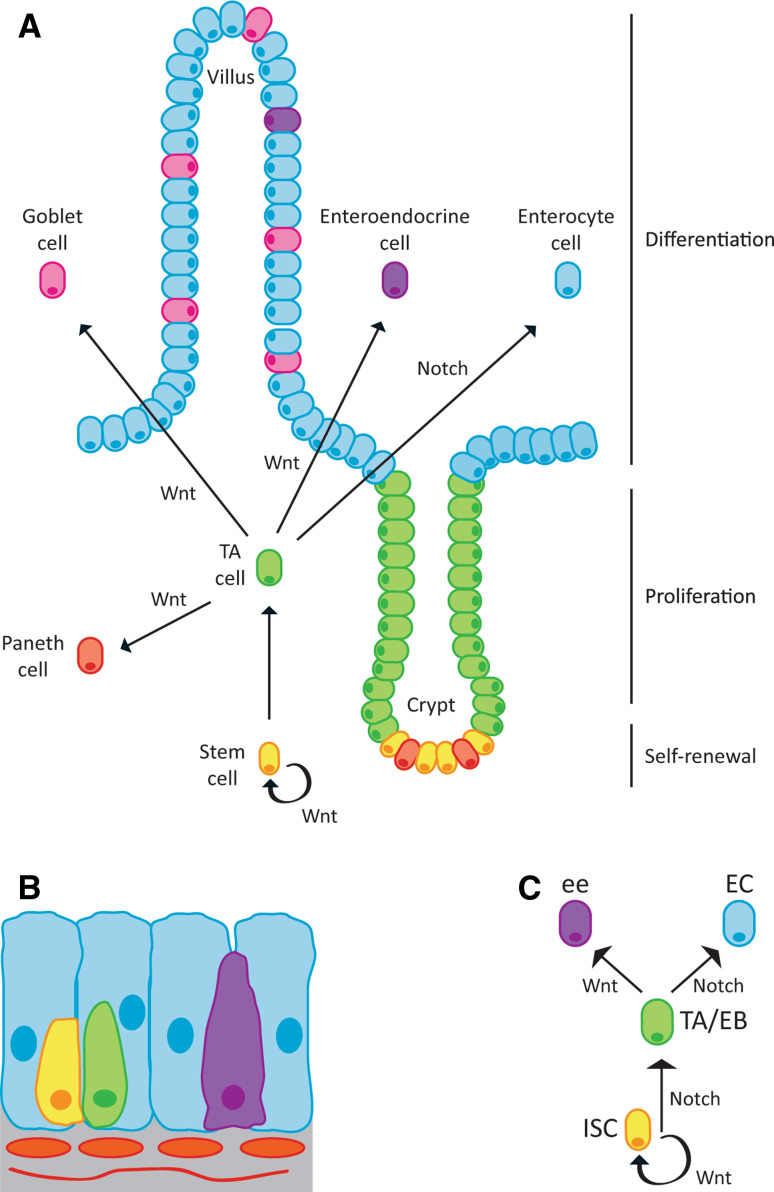Fig. 6.
Wnt and Notch interactions control gut homeostasis. a Schematic representation of the mammalian intestine. Intestinal stem cells (ISC-yellow) reside at the bottom of the crypt along with Paneth cells. Stem cell self-renewal is balanced with the production of transit amplifying cells (TA-green), which move up into the proliferative zone. TA cells give rise to absorptive enterocytes (blue) and the secretory lineage that includes enteroendocrine cells (purple), goblet cells (pink) and Paneth cells (coral). b. Schematic of the fly midgut, which follows a similar but less elaborative pattern to the mammalian model. Upon division, stem cells can give rise to the intermediate non-amplifying precursor the enteroblast (EB-green), which then differentiates into either the absorptive lineage (enterocyte-EC) or the secretory lineage (enteroendocrine-ee). The cells are wrapped in muscle fibres (orange and grey), which are the source of the Wnt ligand. c. Diagram showing the opposing effects of Notch and Wnt signalling at the ISC to TA/EB step and the adoption of the secretory (purple) versus the absorptive (blue) lineage step. This model holds for both mammalian and fly models. (adapted from [116, 139])

